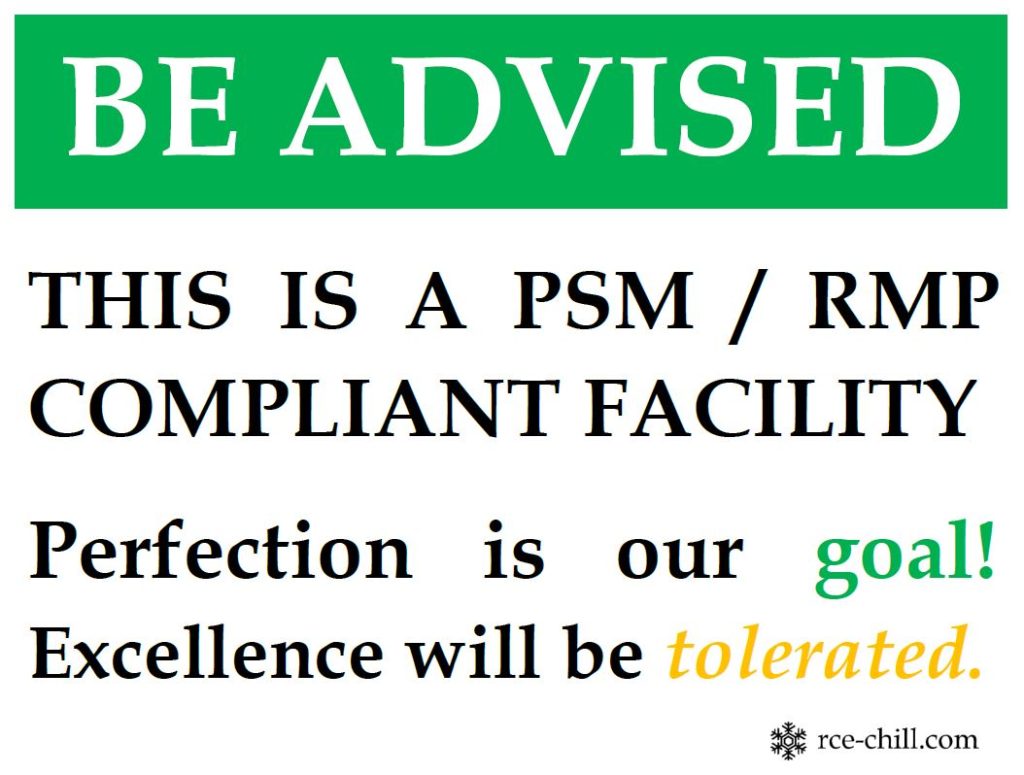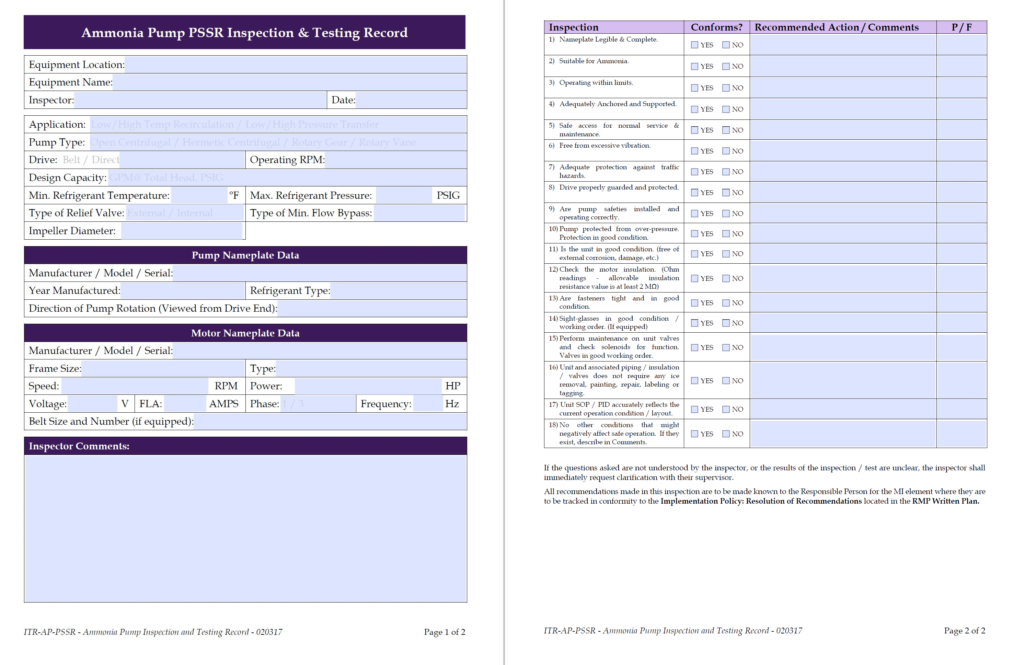Many facilities I’ve been to recently use the Cyrus Shank LQ Series valves for internal/liquid relief applications. At these facilities, there tends to be some confusion on the 5-year replacement schedule since these are internal relief valves but still come with a replacement date tag.
Allow me to explain the conflict here:
Back in 2007, the IIAR issued a revision to their Bulletin 110 (Start-up, Inspection and Maintenance of Ammonia Mechanical Refrigerating Systems) which clarified the current standard on replacing or recertifying pressure relief devices. It states that you have 3 options for setting your relief valve replacement schedule:
- Every five (5) years from the date of installation. IIAR originally recommended (in 1978) that pressure relief valves be replaced every five years from the date of installation. This recommendation represents good engineering practice considering the design and performance of pressure relief devices; or
- An alternative to the prescriptive replacement interval, i.e., five years, can be developed based on documented in-service relief valve life for specific applications using industry accepted good practices of relief valve evaluation; or
- The manufacturer’s recommendations on replacement frequency of pressure relief devices shall be followed.
It’s a fairly straightforward list that led to both facilities and manufacturers setting a replacement schedule not to exceed 5 years unless conditions warranted earlier replacement of the devices. The major follow-up question for schedulers is what to do with internal or liquid relief valves, since they’re not usually subject to the same concerns as atmospheric relief valves.
The same IIAR bulletin covers this as an exception to the previous recommendation, stating that:
“Relief devices discharging into another part of the closed-loop refrigeration system are not subject to the relief valve replacement practices.”
Internal relief devices come in many configurations, so relief valves designated for liquid use are normally treated the same as relief regulators or similar devices in that they aren’t replaced until a regular inspection (or system operation) indicates the need.
Generally speaking, when we set our mechanical integrity schedule we first check the standards (IIAR Bulletin 110 in this case) and then modify that schedule based on the manufacturer’s recommendations for our specific equipment. The issue that occurs here is that the Cyrus Shank bulletin issued for their relief valves recommends that they be replaced at least every five years, without specifying which type. After contacting Cyrus Shank, their engineering department responded with the following:
“The cut sheet is a general recommendation that would apply to all of our valves, including the LQ valves. There is one difference between the vapor service valves and the liquid (LQ) ones: the LQ valves have a slightly different sealing ‘surface’ as compared to the vapor. Other than that, they are essentially the exact same in design. The replacement/inspection intervals greatly depend on the nature of the contents and operation of the system so only general recommendations can be given. We would still recommend the general 5 year replacement interval for both the vapor AND liquid service valves regardless of application. However, the replacement interval is ultimately up to the customer. “
To be consistent with the other justifications in our (manufacturer recommendations based) mechanical integrity schedule, that means that we’ll be replacing those LQ Series valves at least every five years as well. It’s important when setting up a compliant program that we stay informed of all the different RAGAGEP sources that can affect our program. The exception in IIAR Bulletin 110 actually does allow us to set our schedule based on a method of our choosing, but our justification must be defensible. Our defense normally comes from the manufacturer recommendation, so in this case we would have to follow the 5-year recommendation on LQ valves as our RAGAGEP.
10/10/17 Update: Some people have suggested that statements from Cyrus Shank marketing materials somehow override the statements of the Cyrus Shank engineering department. This is absurd and a fundamental misunderstanding of RAGAGEP. If the Cyrus Shank engineering department changes their position then this issue can be re-evaluated, but until then it remains as shown above.
For more on this topic, click here.
11/09/18 Update: Cyrus Shank has helped us deal with this issue!



